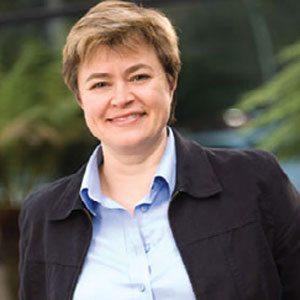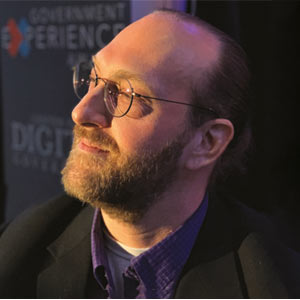THANK YOU FOR SUBSCRIBING

Mark Bryant, CIO, PCL Construction
PCL Construction, like many organizations, is saturated with Big Data. The definition alone is confusing since the forms of data are exhaustive: relational data, unstructured data, machine data, high-velocity data, cloud data, social media data—it all counts as data.
Software vendors and industry analysts frequently define big data in V’s: volume, velocity, and variety. The superlatives describing Big Data continues to grow; IBM established the Institute for Massive Data. As George Dyson, a technology historian, observed, “Big Data is what happened when the cost of keeping information became less than the cost of throwing it away.”
Arguably, Big Data is a function of economics. However, at PCL, Big Data is not a type or class of data.
PCL’s data includes health and safety, construction project, equipment and building sensor, financial, digital media, multi-structured, application, any data found inside and, as PCL increasingly invests in cloud applications and services, outside of PCL. By any measure, PCL is awash in data. At PCL, Big Data describes multiple and coherent approaches to storing, processing, analyzing, and extracting value from data.
Big Data is frequently over-hyped as a magic bullet, able to seamlessly render endless business insights and value. PCL’s challenge is to leverage its information assets and create valuable and measurable business outcomes—while avoiding the hype and ill-defined data strategies. That requires PCL’s business units, in cooperation with its information technology group, Business Technology (BT), to reconsider common assumptions about data–and critically evaluate its potential to deliver business value. To that end, PCL’s objective is better data; and better data means optimizing PCL’s (big) business data.
PCL’s Business Data Optimization (BDO) program produces better data by crafting and executing a data strategy that coordinates software, data integration services, governance, and business analytics to produce measurable and material business outcomes. BDO’s objectives are clear: lower operating costs, improve business process efficiency, reduce IT complexity, and offer PCL’s clients value-added services that leverage PCL’s information assets.
Data Management Software
In 2014, PCL invested in a cloud-based master data management (MDM) and iPaaS (integration platform as a service) platform. PCL’s corporate business processes and construction operations rely on consistent, accurate, and trustworthy data. The MDM platform models unifies and de-duplicates PCL’s business entities creating golden project, employee, contractor, supplier, equipment, material inventory, and accounting entities that are used across business applications and processes.
Protecting PCL’s information integrity is essential to BDO’s success. PCL’s data quality suite (DQS) profiles, corrects, reports, and monitors data quality within PCL’s applications. More significantly, it embeds a data quality firewall around PCL’s business processes, ensuring the flow of data within and between PCL’s applications continually provides accurate, consistent, complete, and trusted data to PCL’s business information stakeholders.
Data Integration Services
PCL has traditionally relied on hundreds of complex and
As PCL continues to invest in new business applications, EIF enables three objectives: it provides a consistent and clearly understood set of data integration rules and services, which applications must follow and utilize; it reduces data integration cost and complexity; and it significantly accelerates delivery of business solutions and information to PCL’s business and field operations.
Information Governance–While data is not a line item on PCL’s balance sheet, our BDO program requires a data governance and optimization mechanism to protect a valuable PCL asset: information. Certainly, governance often implies command and control, which contradicts PCL’s entrepreneurial and innovative business culture. However, PCL’s senior leaders recognize that oversight of PCL’s data management practices is a business discipline that requires rigor, process, and clearly defined roles and responsibilities to manage PCL’s data.
PCL’s evolutionary approach to governance balances entrepreneurship and control focuses on optimizing business processes that provide and consume data, rather than providing authoritarian governance rules and procedures. Organizationally, we recently established the BDO Committee, consisting of PCL’s VP Finance, CIO, an Executive Vice President, and our BI Analytics Head to provide executive oversight of PCL’s information.
Business Analytics
PCL’s business analytics maturity is typically at the descriptive stage; static reports summarize what happened. Descriptive analytics are, however, essential to PCL’s operations. For example, it provides business intelligence tools that report health, safety, and environment (HSE) performance to regulatory agencies and PCL’s senior executives, supporting PCL’s primary mandate to protect the workforce’s health and well-being.
“Big Data is frequently over-hyped as a magic bullet”
Better data supports PCL’s analytics roadmap to predictive capabilities and, ultimately, prescriptive analysis. Better data enables actionable insights into why events happened, what is likely to occur and, when those events do occur, PCL can optimize its corporate processes and field operations. The following projects, now underway, illustrate the range of PCL’s analytic initiatives.
. HSE Analytics–PCL’s safety management system relies on a legacy reporting platform to aggregate transactional safety data for summary reporting. As data volumes grew, report execution time exponentially increased. PCL is developing a safety analytics platform with business intelligence software to define and provide universal, corporate, and divisional safety performance measures via dashboards and scorecards.
. Equipment Utilization and Optimization–PCL is implementing a data warehouse to measure, track and optimize tool utilization across PCL’s operating districts in order to support project requirements, right size the tool inventory and reduce tools management and storage costs. The platform provides field personnel with real-time access to empirical tool information, enabling timely and informed decisions.
. Construction Quality Optimization–PCL’s Quality Management team implemented a data visualization tool that graphically explores the unstructured data collected by quality inspection reports. By creating visual models describing the patterns and factors influencing construction quality, PCL’s project managers can objectively anticipate the likelihood of quality issues within upcoming construction projects, proactively manage construction quality, and eliminate costly rework.
PCL’s BDO program recognizes that Big Data surrounds PCL’s business and field operations. The objective is to transform Big Data into better data. Better data supports objective analytics that drive business processes and objectives to reduce cost, improve efficiency and, ideally, provide additional client services using a vital asset, data. In the construction industry and here at PCL, effective asset utilization is a competitive advantage. Information is the construction industry’s new concrete foundation and analytics a new blueprint.
Weekly Brief
I agree We use cookies on this website to enhance your user experience. By clicking any link on this page you are giving your consent for us to set cookies. More info
Read Also
Artificial Intelligence - Myths And Truths
Sustainable Future through Innovative Technology Solutions
The Future Relies on Augmented AI
Digitalization with the use of digital technologies/Improving business through digital technologies
How Marco's Pizza Leaned On Technology To Succeed Amid The Pandemic By Quickly Pivoting To Contact-Free Delivery And Curbside Carryout
Bunnings Diy Digital Transformation
For a Smarter City: Trust the Data, Ignore the Hype
Smart Community Innovation for the Post Pandemic






















